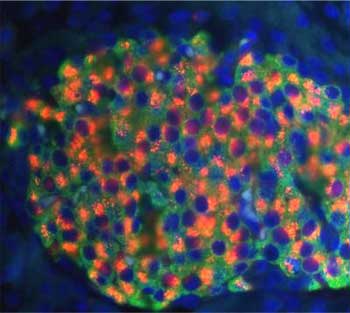Diabetes is a chronic disease characterized by high levels of glucose in blood (hyperglycemia). It occurs when the pancreas does not produce enough insulin or when the body can not effectively use its produced insulin.
Children diagnosed with diabetes have type 1 diabetes and are insulin dependent. They have to manage or to receive insulin injections using an insulin pump. People with type 1 diabetes produce very little or no insulin and require insulin injections to survive. This is the most common type of diabetes in children and youth.
What is insulin? Insulin is a hormone produced by the pancreas that helps cells to take glucose from the blood and transform energy production. Thus, the disease is triggered when the body has enough insulin or when it can not use the insulin it produces to convert glucose into energy. Insulin is the only hormone that balances blood sugar levels and causes glucose to be transferred into cells and be used as a source of energy for the body.
Type 2 diabetes (also known as the adult age diabetes) is the most common form of diabetes. People with type 2 diabetes can not use its own insulin effectively. They can often improve their status only by changes in lifestyle. But in many cases an oral medication prescribed by a doctor is required. Only the doctor decide if you need insulin.
Nearly 50% of people with type 2 diabetes are unaware of their health status because the disease is not yet manifested.
What are the symptoms of diabetes?
– Excessive / chronic thirst
– Dry mouth
– Frequent urination
– Hungry
– Unexplained weight loss
– Blurred vision
This variety of symptoms are due to high levels of glucose in the blood.
Diabetes predisposes to the development of generalized microangiopathy with clinical consequences that affect the kidneys, eyes and nerves. Nephropathy is the dominant cause for kidney complications and is responsible for more than 40% of cases of terminal renal complications. Almost all patients develop retinopathy, and 40-50% progressing proliferative retinopathy when diabetes has reached during the 25 years since the discovery of the disease. Diabetic retinopathy is the leading cause of diminution of vision among patients below 60 years. Moreover, the burden of morbidity and mortality is increased with patients suffering from microvascular diseases.
Over the past decades new techniques were introduced for managing diabetes. Most important are the self-control of blood glucose and long-term monitoring of glycemic control by frequent measuring.

